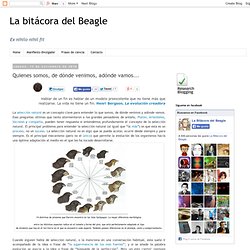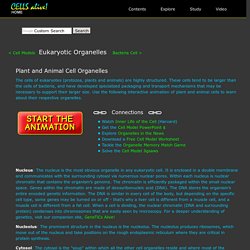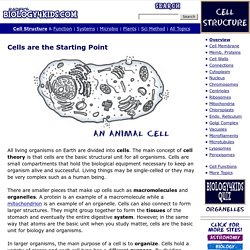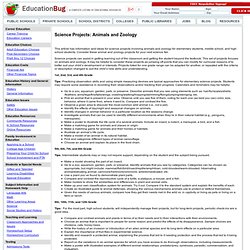

Quienes somos, de dónde venimos, adónde vamos... La selección natural es un concepto clave para entender lo que somos, de dónde venimos y adónde vamos.

Esas preguntas últimas que tanto atormentaron a los grandes pensadores de antaño, Platón, Aristóteles, Sócrates y compañía, pueden tener respuesta si entendemos profundamente el concepto de la selección natural. El principal problema para entender la selección natural (al igual que “la vida”) es que esta es un proceso, no un suceso. La selección natural no es algo que se pueda acotar, ocurre desde siempre y para siempre. Es el principal mecanismo (pero no el único) que permite la evolución de los organismos hacia una óptima adaptación al medio en el que les ha tocado desarrollarse. Cuando alguien habla de selección natural, o la menciona en una conversación habitual, esta suele ir acompañado de la idea o frase de “la supervivencia de los más fuertes”; y si se añade la palabra evolución se asocia a la idea o frase de “búsqueda de la perfección”. MWR SWTNirXMI.CDLEUBXTQHNZVJQI'" The Process of Mitosis. The Virtual Cell. Cell Models: An Interactive Animation.
Nucleolus: The prominent structure in the nucleus is the nucleolus.

The nucleolus produces ribosomes, which move out of the nucleus and take positions on the rough endoplasmic reticulum where they are critical in protein synthesis. Cytosol: The cytosol is the "soup" within which all the other cell organelles reside and where most of the cellular metabolism occurs. Though mostly water, the cytosol is full of proteins that control cell metabolism including signal transduction pathways, glycolysis, intracellular receptors, and transcription factors. Cytoplasm: This is a collective term for the cytosol plus the organelles suspended within the cytosol. Centrosome: The centrosome, or MICROTUBULE ORGANIZING CENTER (MTOC), is an area in the cell where microtubules are produced. During animal cell division, the centrioles replicate (make new copies) and the centrosome divides. Centriole (animal cells only): Each centriole is a ring of nine groups of fused microtubules. Cell Structure. All living organisms on Earth are divided into cells.

The main concept of cell theory is that cells are the basic structural unit for all organisms. Cells are small compartments that hold the biological equipment necessary to keep an organism alive and successful. Living things may be single-celled or they may be very complex such as a human being. There are smaller pieces that make up cells such as macromolecules and organelles. A protein is an example of a macromolecule while a mitochondrion is an example of an organelle. In larger organisms, the main purpose of a cell is to organize. If you were only made of one cell, you would be very limited. There are many types of cells. Plant cells are easier to identify because they have a protective structure called a cell wall made of cellulose. Cells are unique to each type of organism. Humans have hundreds of different cell types. Inside the Cell (Canadian Museum of Nature Video)
Plant and Animal Cell Overview: The Basics from Thinkwell Biology. Cell Biology. Darwin: Who Wants to Live a Million Years? Science. Learn Biology: Good Bacteria vs. Bad Bacteria. Science Projects: Animals and Zoology - Education Bug. This article has information and ideas for science projects involving animals and zoology for elementary students, middle school, and high school students.

Consider these animal and zoology projects for your next science fair. Science projects can assist in getting learning out of the classroom and getting the student beyond the textbook. This set of projects focuses on animals and zoology. It may be helpful to consider these projects as jumping off points that you can modify for curricular reasons of to better suit your child’s development or interests. Projects listed for one grade range can be adapted for another, or repeated with the criteria or description changed to suit the child’s new skills and understanding. 1st, 2nd, 3rd, and 4th Grade Tips: Practicing observation skills and using simple measuring devices are typical approaches for elementary science projects. Go to a zoo, aquarium, garden, park, or preserve. 5th, 6th, 7th, and 8th Grade 9th, 10th, 11th, and 12th Grade.
How Muscles Work.